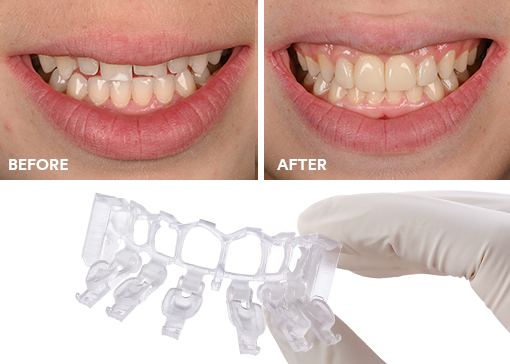Zirconia puzzle: what makes zirconia unique and how to choose the right zirconia
Zirconia may be part of your everyday vocabulary, but how much do you know about this ceramic material? Learn more…


In dentistry, avoiding errors is better than correcting them after something has gone wrong. In prosthodontics, this can be achieved with simplification, standardization and one deceptively simple tool: a checklist.
What can be done to produce a perfectly fitting, esthetic indirect restoration based on a low quality impression, an inaccurate model or a faulty bite registration? The truth is: not much. Without essential information about the position of the preparation margin, the shape of the abutment teeth, and the occlusal relationships, the act of restoration production becomes guesswork rather than craftsmanship.

Impression with an inaccurate reproduction of the preparation margin.
And if production is based on guesswork, even restorations created by highly experienced, knowledgeable dental technicians will most likely be deficient. As a consequence, you might be confronted with a marginal misfit or improper interproximal and occlusal contacts at try-in, which need to be adjusted. However, the adjustment itself is not the end of the story. Adjustments might weaken the microstructure of the restorative material, or reduce the wall thickness or connector strength to less than the necessary minimum. This, in turn, may lead to failures due to chipping, fractures or decementation, with a remake often being the only adequate solution.
 |
 |
| Model and bite record of poor quality. | |
 |
|
| Restoration produced on the basis of low-quality records after adjustments leading to chipping. | |
Assuming that you need to focus on adjustments instead of patients in your dental office for one hour per day, you will waste a total of 3.4 years of valuable time on restoration rescue measures over a 30-year career. Remakes are even more costly: They usually require another impression and thus come along with an extra appointment, even busier schedules, and more stress. On top of that, the patient will likely be upset about additional appointments and longer waiting times.

Sample calculation of the cost of adjustments assuming that one hour per working day is spent on corrective measures.
*Source for average cost of a dental practice with and without dentist’s salary: 2018 Annual report by Dental Association of Bavaria, Germany (KZVB)
Your partner in the dental laboratory faces similar problems. In order to compensate for the additional time and cost involved in the remake of a single-unit restoration, the laboratory needs to produce another three to four units – based on the cost structure in my dental laboratory. Hence, your practice team and the laboratory team have the same goal: to minimize the number of remakes.
If your adjustment and remake rate is already close to zero, there is no need to change anything. If you would like to reduce adjustments and remakes, there is no need to change everything: simplifying and standardizing your workflows – including the practice-laboratory interfaces – can help you break through your redos.
The idea is to avoid errors instead of correcting them by reducing the complexity and variability of factors in your clinical and technical protocols. The truth is that every step in the procedure, from tooth preparation and impression taking to model production and restoration design, has an impact on the quality and fit of the final restoration. If procedures are streamlined, the techniques and materials used are always the same, and information flows smoothly between practice and laboratory, then deviations from the optimum result (e.g. caused by shrinkage of the impression material or expansion of the cast) become predictable and fixable.

The same applies to communication and the bidirectional flow of information between the practice and the dental laboratory. They need to be standardized to ensure that:
How do you ensure that all relevant details are passed on at every interface between the partners in the restorative team? A solution that has been proven to work very well for my laboratory is the use of checklists. These simple tools:
This is why we (Prof. Jan-Frederik Güth, MDT Otto Prandtner and myself) have developed several checklists that streamline the flow of information within the procedure of producing and placing indirect restorations.


Continue reading about the use of checklists in Part 2 and Part 3 of this article series.

Zirconia may be part of your everyday vocabulary, but how much do you know about this ceramic material? Learn more…

Achieving the correct shape is vital to a natural-looking anterior composite restoration. Learn how the 3M™ Filtek™ Matrix, paired with…

Direct composite restorative procedures can be challenging, particularly when it comes to esthetic cases. Discover how new techniques and tools…